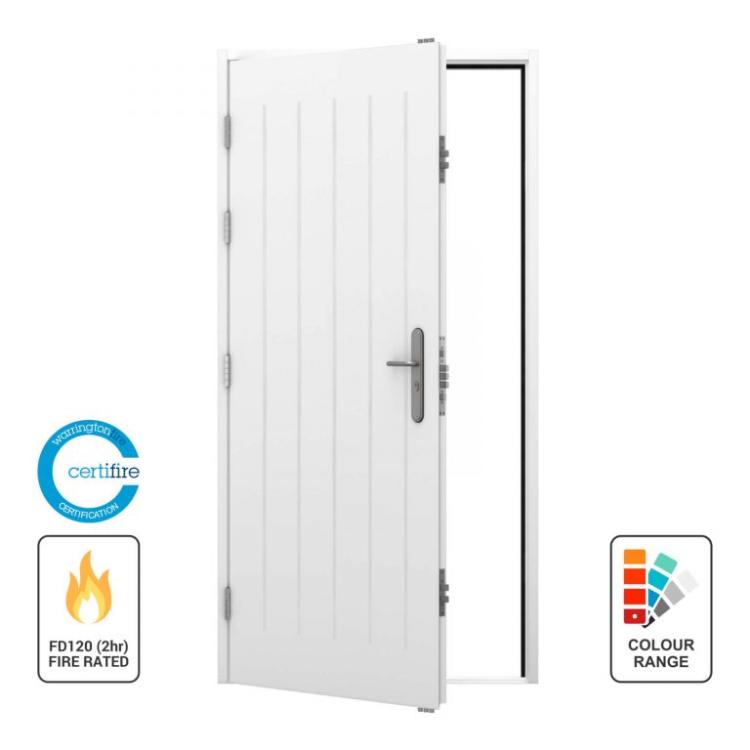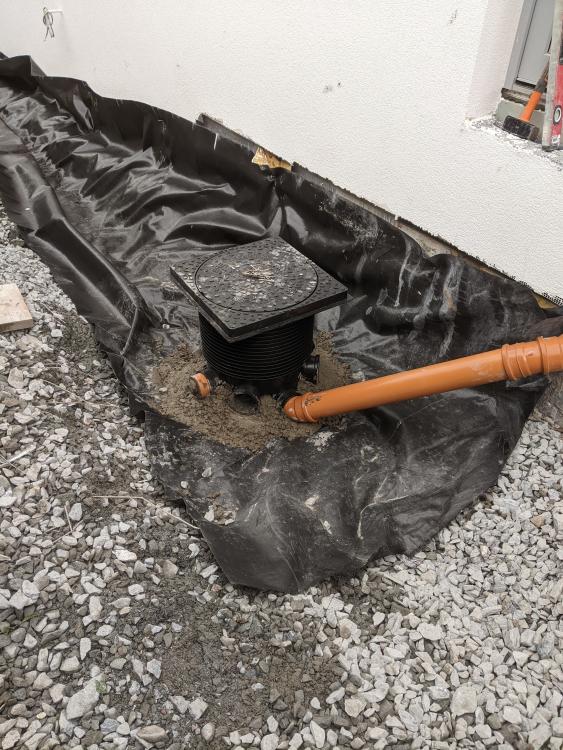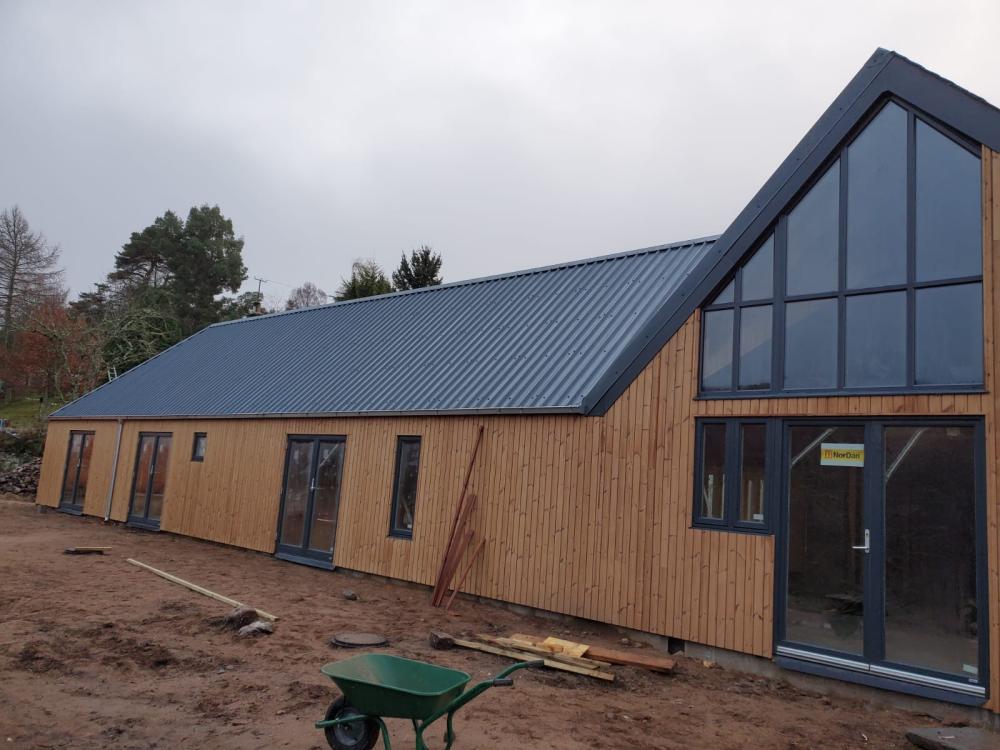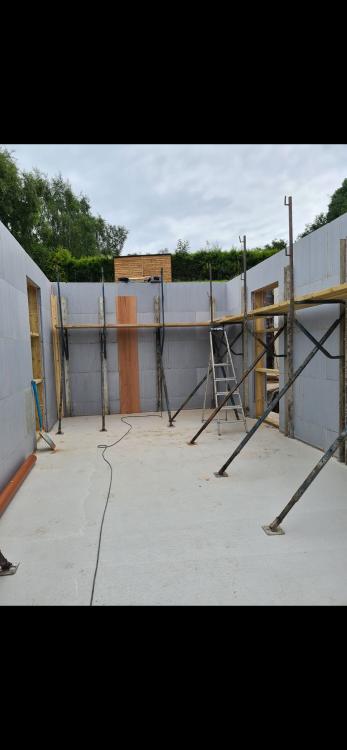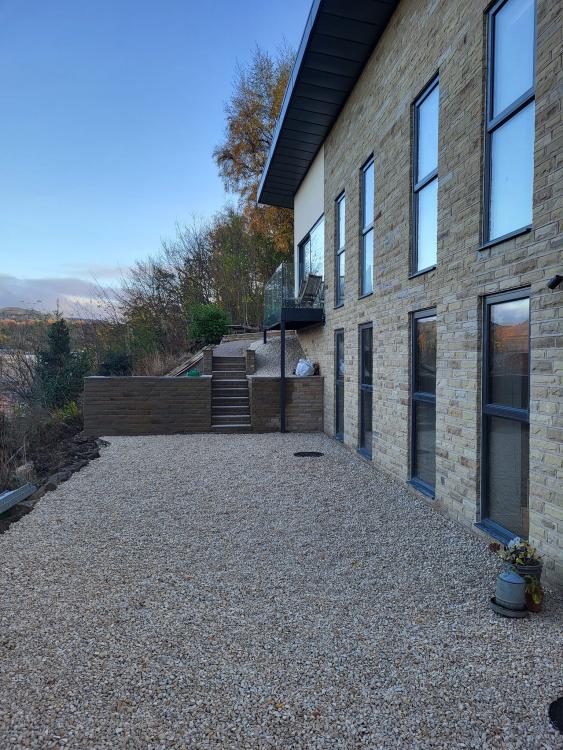Leaderboard
Popular Content
Showing content with the highest reputation on 01/06/23 in all areas
-
I had a quote from one guy who wanted to use NuHeat. was stupidly expensive. I ended up buying the stuff direct from Wunda and doing it myself. Also, is your place a new build or renovation? what are the insulation and airtight levels like? most folk on here who have well insulated and airtight houses don't have any heating on the upper floor and they say they don't need it. are you sure you need UFH on all 3 floors? depending on the layout and insulation/airtight levels it's generally thought that electric UFH in the bathrooms is enough to heat the upstairs. might save you enough to be able to afford the ASHP here's our blog post for our attempt at laying UFH.3 points
-
I suggest you look at the P&K planning portal. Search for houses in your rough area and see what has achieved planning. I spent hours looking at the planning portal which proved worthwhile for solving a few issues that came up with ours. I also drove around the area taking pictures of new builds. There’s a wide variety styles that get built. P&K is quite pragmatic though.2 points
-
2 points
-
Defo steer away from that idea if at all possible. 365 regen cycles or more each year = pump soon conked out.1 point
-
The Vogue MIs don't cover the ins and outs of using SL1 & SL2. All you need for SL2 is a switched live from your wiring centre & programmer to the boiler SL2 IN when the cylinder calls for heat so it can be as dumb as it needs to be. The bit that does the modulation is the room stat which is what gets connected to the opentherm on the boiler. SL1 is then just bridged between L & IN at the boiler so there's no switched live to SL IN on the boiler from the programmer/room stat as this is managed through opentherm. If you were to upgrade to the T6R you wouldn't get any particular benefit from this perspective because as soon as you wire it up to opentherm the heating switched live connections are automatically disabled on the receiver (this permits the installation of the receiver for dumb on/off ch control using switched live, or load compensation through opentherm - the disabling of the switched live when opentherm is connected ensures you can't double connect to the boiler and confuse things).1 point
-
I would do it when off. And wait an hour at least for all the micro bubbles to accumulate at the top of the system. Maybe do it in the morning before the pump runs.1 point
-
The install manual does contradict it's self all over the place. Stating you do and don't need insulation. You need to be careful with such statements as "Due to the thermal characteristics of a solid sub-floor downward heat loss is limited to between 6% and 10% of the total heat output, which represents a small percentage of the annual heating costs for the property." So does these actually mean, you are already loads of energy in to your floor, what does an extra 6 to 10% matter? Interesting in the solid floor part, it states "which include being able to run the heating approximately 1˚C lower than with traditional radiators and low flow temperatures that mean condensing boilers operate more efficiently". So you can run the UFH at 69 degC? Interesting my UFH at -2 the other week ran at 30 degC, 40 degC lower than traditional radiators! That does make the boiler run efficiently. Do you own maths. Make sure you are comfortable with your choice. So if you happy to increase your energy consumption from heating by 10% over the cost of radiators, fill you very warm boots, because your floor could be very warm.1 point
-
as long as they keep the footprint there are special dispensations due to it being an existing building. the link worked for me again. maybe you will have to approach it from the base website p and k planning.1 point
-
Can I suggest something? There is a danger of losing our interest when we make suggestions but you don't appear to be listening or agreeing. Not agreeing is ok, but do say. How about you do as we have collectively suggested? Take a week to look at nearby buildings, new and old,that can be your guidelines. Then you can choose elements that suit what you want to do, and the planners will have your references when assessing it.. Also look online at recent applications. The drawings and discussions will be a huge help to what they are accepting and what you like yourself. I predict less stone and slate than they are suggesting. Have you looked at the P and K Planning portal ? Then send us some pics and a summary of what you have found out.1 point
-
1 point
-
Carpet upstairs with underlay, voices and tv can be heard in bedroom above more than I hoped. From reading I get the impression “mass” is the best sound absorber and no sound gaps along with de coupling (sound bars) others will give their view I am sure.1 point
-
1 point
-
1 point
-
just to chime in, For bathrooms, I've been told to double up the plasterboard. Got RWA45 50mm as infill for studs. For ceilings I bought some knauf 100mm acoustic. Got a load of res bar, but, a cock up with the full size window height in the lounge means I have about 30mm of frame to play with.1 point
-
Get your connections to water, sewer, electric done asap, makes life easier through the build, and more importantly when you get to the end you're not up shit creek when the utility company tells you it's a 6month wait. And when you look back on it, the £1509 or so for tempory connections, kiosks etc will look like money very well spent. You'll need potable water for your welfare facilities anyway. Portaloo and handgel aren't enough.1 point
-
https://www.pv-magazine.com/2023/01/02/residential-thermo-acoustic-heat-pump-produces-water-up-to-80-c/ French startup unveils new residential thermo-acoustic heat pump French startup Equium has developed a heat pump core that works on acoustic waves and produces hot and cold air. Equium manufactures the core and works with another company that integrates it into heat pump systems. The units are scalable from 1 kW to 3 kW and are designed for residential applications. The novel heat pump can purportedly reach higher temperatures than existing heat pumps, without the need for refrigerants. It works with a high-fidelity (Hi-Fi) speaker powered by electricity that creates an acoustic wave in a closed-pressure vessel filled with helium. The acoustic wave causes the gas to compress or expand, displacing heat from a lower temperature to a higher temperature, or vice versa. The heat pump core is filled with water, which absorbs or releases that heat. “The acoustic wave does the work of compression and expansion of the gas that produces heat or cold, respectively,” Philippe Loyer, a product manager at Equium, told pv magazine. Loyer said the heat pump can generate domestic water at up to 80 C. He claims that one of the key benefits of the acoustic heat pump, in comparison with traditional units using refrigerants, is its ability to reach very high or low temperatures. “Traditional heat pumps use refrigerants with a temperature phase. They a have temperature limit, which is the temperature of the changing phase from liquid to gas of the refrigerant,” said Loyer. “In our core, the helium stays in gas form. Because helium remains a gas until -300 C, we can achieve higher temperatures inside our heat pump core.” The heat pump purportedly works with all external heat sources, including air sources from -15 C to 50 C. Given that its core is filled with water, it works best as a water-source and geothermal heat pump. To be used as an air-source heat pump, the unit can be equipped with a fan that transfers the heat from the air to the water, according to Loyer. The heat pump has a coefficient of performance (COP) of three to four, which means that it produces 3 kW to 4 kW of heat for each kilowatt of power it consumes. Equium is targeting 8 kW to 10 kW of thermal power for its heat pump core, Loyer said. It has a 30-year lifetime, with an easy installation process. The acoustic heat pump also offers better modulation than traditional units. “We have the same efficiency as traditional heat pumps, but we have better modulation thanks to acoustic transfer,” said Loyer. Traditional fixed-output units cycle between on and off multiple times a day, switching between zero and maximum capacity to achieve the right temperature balance. But the new heat pump modulates its output to continuously provide the desired temperature. “The output regulation of a classical heat pump is very energy consuming. On our acoustic system, the regulation is very easy,” Loyer explained. “If you want less power, you can just decrease the volume of the Hi-Fi speaker, to 10 decibels (dB), 20 dB, or 30 dB for example.” Equium claims that the heat pump system is completely silent, despite the use of a speaker to generate the acoustic wave. The level of noise is reportedly lower than 30 dB – the equivalent of a whisper. “The sound our system produces stays confined inside the core, so you cannot hear it from outside,” said Loyer. Equium is now conducting field tests for its thermos-acoustic heat pump. It expects to launch it in the second half of 2023.1 point
-
1 point
-
So if the door is 800, that’s approx 5x3 to be heated less the shower room. At 150mm centres that is around a 95m loop (you can do 120m at a push) and then the shower room. All doable on 2 circuits @Jilly and especially if you use self balancing actuators as they will trim the flow down based on the return temp.1 point
-
What’s above it? 99.9% sure it’s not load bearing. Just take it down in sections, you will see/feel if it is supporting anything.1 point
-
Floor void was filled with 150mm of sound (wool like) insulation but although it met building regs I find it very poor, as I said before I regret not double boarding or/and sound bars. I have 20:20 hindsight and hope others will gain from my comments. Plasterboard is not expensive in the scheme of things.1 point
-
Drop it as steep as you like, the old wives tale of leaving solids behind is more for clay pipe, plastic runs fast. Slope it down straight into chamber , get a bit of speed behind it and it will keep the whole run clean and shiny.1 point
-
Use the sunshine solar system builder. I would allow about £500-1000 for the inverter (depending on functions you want), £50 for cabling, £50 for the 2 isolators. Not sure how many panels you are talking but say £300 for rails and mounting - that is about you. Break the system into easy components. Roof rails, PV panels, DC cables, DC isolator, invertor, AC isolator, generation meter if you want then consumer unit connection. Plenty of companies sell the rails, rails, splice kit, mounting brackets and roof mounting brackets. To work out the rail requirement you just need to know the panel size (usually width) for mounting requirements. For the inverter its fairly simple, size it to your array, a few technical details to consider but its pretty easy. If you are going for a 4.92kW system then I would size the inverter about 4.5kW - you may struggle to get one bang on so I would see if I could go up in power density to a panels that gave me about 5.5kW then use a 5kW inverter. If you can get the roof bit done, get a friendly, imaginative spark in to do the rest - they do exist, I know of about 5.1 point
-
I think so, my screed depth varies 10-20mm in places . The company I chose used a cemfloor product, The set up a level using mini tripods, and pump the screed in to meet the tripod level, once pumped in they mooch around with a tamping thing to ensure no air pockets, then they lightly float the top to ensure a smooth'ish finish.1 point
-
Most battery or hybrid inverters will come with an EPS output that lets you tap the batteries from a separate circuit. Easy enough to attach a consumer unit to it and move the lights, at least, onto it. I currently have a simple double socket in the loft that'll work in the event of a power cut - it cost £20 extra at install time. More complex options per https://www.deegesolar.co.uk/eps_for_solar/ You definitely don't need tesla stuff to get it done.1 point
-
Crikey I built turnkey (no garage or kitchen though) with another company similar spec, size, handover 2020, for significantly less than that, for nearly £200k less. Looks like I got a good deal. My kitchen is from DIY kitchens BTW, very happy with it/them.1 point
-
More or less, yes this is what i had in mind. There are endless series of optimisations you can make to this layout by tweaking the sizes, shapes and styles of the sofas and then moving them around slightly, but I think placing the tv on the wall opposite, either within a media unit or on a media unit, is a very good start. For example the sofa by the bay window could be a chaise long style that is open on both sides, so as not to close off the window seat, e.g. like this: https://www.darlingsofchelsea.co.uk/helston-3-seater-chaise-sofa-pview?gclid=CjwKCAiAqt-dBhBcEiwATw-ggEOpQUS7eMGUbE93fHZt7EjmVPvsKl0p7hmFYeMIbTnr1uTljAbTbBoCWxcQAvD_BwE Or https://slf24.co.uk/covex-daybed-right-arm.html?gclid=CjwKCAiAqt-dBhBcEiwATw-ggICikkXWUHkKk56Dp0C4JDMZmGS-sMMDiBu0a_v6LgQpGCkRTnCQ1hoChVoQAvD_BwE#141=257 Many TVs actually come on a swivable stand. My Sony Bravia 55" did, for example, allowing about 40 degrees in each direction.1 point
-
The limit is the size of the oven to toughen the glass. It'll be a job for a commercial scale glazier - I'd have thought there's an oven big enough in the UK but phone someone like Pilkington and ask them. If UK facilities are limited there'll be somewhere in Europe that could do it. As it is likely in the middle of a large roof then a glass lifter may be unsuitable and you'll need a crane (with suction pad attachment).1 point
-
Coming back to this thread I'd recommend anyone looking at improving a small cottage to read up on Downies Cottage. https://www.historicenvironment.scot/archives-and-research/publications/publication/?publicationId=134ef4b1-90e5-4dcc-b1da-a6dc00a9b4ee Google will provide more results once past the holiday listing website. And absolute beauty of a property wonderfully modernised and improved while still keeping all its charm.1 point
-
We mainly use 25 mil acoustic in party walls and ceilings There’s a misconception that packing it full of rockwool is better The insulation is there to stop the sound bouncing round the void1 point
-
This is a good reference top: https://www.greenbuildingstore.co.uk/can-an-mvhr-system-be-used-for-cooling/1 point
-
Lovely looking house (bar perhaps the 'prison window'!) - great work.1 point
-
Managed to get this done just before Christmas. Used a 250l Maxipod from copper industries . Not cheap at about €2k but it seems to be well made and has a 25 year guarantee. I installed a new galvanised tank in the attic as a header tank, this leaked at a corner but I plugged it with a small bit of silicone. I was keen to avoid any joints in the pipes, especially in inaccessible areas so it looks a bit messy where I've curved them into the ceiling space etc. As I was limited on time and skills I didn't want to pull down any ceilings or dig up floors. All pipes were routed behind cabinets etc except across one ceiling where I put them in conduit. I used Hep20 manifolds and a radial layout for the hot water with 10mm to the kitchen tap and all basins. It results in a very quick time to hot. About 6l/min at the kitchen tap which is fine. 15mm everywhere else and the flow rate is about 10l/min at the bath taps. Picked up a Triton mixer from Screwfix which works very well. In fact the DHW performance is as good as the UVC in our own house. I don't know how long the DHW lasts but it seemed to satisfy 5 adults over Christmas so it can't be too bad. The hot tap is fresh water also which is nice and there's no servicing as per UVC's etc. I think I may consider one when the SS cylinder in our own house gives in. The store is mainly heated by a Rayburn 355SFW burning a mix of soft and hardwoods on a thermosyphon/gravity circuit. It burns for about 12hrs a day so no shortage of input. I just used one pump for the CH which turns on when the bottom of the tank gets hot to circulate the water through the radiators. Thermosyphon is proportional to the temp difference between flow and return and height of the tank. I really had nowhere else to put the tank so it's base is only about 150mm above the top of the cooker and 2m horizontally away. This limits the amount of heat transfer we can get from the cooker so the rads typically never get much above lukewarm. This is fine as the long duration of burn has made the house very comfortable for the first time ever! The oil boiler is just on a timer and heats the tank directly. When the bottom of the tank is hot the CH pump kicks in on a thermostat. As the oil boiler is probably about 3 times more powerful than the cooker it has no problem with the rads but there is a lag between it coming on and heating the house, it has the benefit of heating the DHW proportion first however. Any other questions fire away.1 point
-
It's early days for the cabins so no cost feedback. Noise wise no issue really. The one installed in the caravan is a cheaper version, we've had a few days below 0. I think the worst has been -4 with -7 wind chill. And it still performed well. Although it did go into defrost mode more often. Cost wise on the cold days it way averaging 0.8 kw/h. For 6 days in Jan it's used 56Kwh.1 point
-
1 point
-
There are systems which can legally do this, but they will be expensive. For instance the SMA Sunny Island inverters can be set up to do this and I believe that they are now certified for grid connection. However they aren't cheap the SI 8.0 is about £3500 now, before battery and ancillary costs.1 point
-
@Jilly how big are the rooms as I can’t see any dimensions .? And where is the manifold ..?1 point
-
I think what they're saying is your larger room is too big to be just a single loop, so it needs two loops to cover the area. But as your shower room is quite small then the second loop is able to cover both the shower and remainder of the large room. But that's means the shower room can't be independently controlled as it shared with the main room. So if you really want the shower to be independent you'll need two loops to cover the larger room and a separate third loop for the shower.1 point
-
It depends on how you operate the system, if all the other loops have thermostat, the thermostat will call for heat. The actuator will open the loop at the manifold and if the pump and boiler aren't on, start them up. Another alternative is a single thermostat can control one loop or multiple loops, depending on how the actuators are wired up in the wiring centre. As I see it, you would have one loop in each room, as you only have two ports free on your manifold. Each could have its own thermostat. An alternative control, is you leave a loop on a manual valve and always open, then when anywhere else calls for heat, that loop is always heated. No call for heat elsewhere, this loop is off also. Lots of differing ways, depending on what you want. I just have a single thermostat for the whole house, that starts the pump, all loops are always open, as I run on weather compensation.1 point
-
So many self builders just look at this as "something the big boys have to do", but the onus is absolutely on them. Preventing someones death, ( which includes that of a 5 year old child you've never met or ever even seen before, who has found a loose fence panel to wander through and then falls to their death on YOUR private property ) is on YOUR head, and no other. Some scary shit I kid you not. A lot of the self proclaimed self builders I meet seem to think project management is; go to Screwfix, buy hi-vis and hard-hat, job done order skips make phone calls to find folk to do the work stay up late every night trying to beat the prices they gave them, whilst failing to cost / get the correct stuff, and pissing these people off at the same time when they turn up and cant work that day ask pissed off people to go get the right stuff, which now has cost you 160% of what the original cost would have been. choose colours for pretty things celebrate when you bring the job in; on time, on budget, or not......... @Drellingore Hi, and welcome to the forum. Strap yourself in, as you will get straight talking from folk here who have done this, got the T shirt, and who also got things wrong but were selfless enough to document their journeys ( warts and all ) for folk like yourself to benefit from. I think you are nuts starting this company, and you are very unsure of your actual VAT status. FYI, an accountant is not the best font of knowledge in this respect, so maybe defer to the services of "The VAT man", a paid online consultant who will give you the facts. Others may be available, this is the only one I've heard feedback from. 110v or 230v, matters not a single jot If the 230v supplies are from a certified source with a proven ( tested ) earth protected circuit, then you can use either perfectly acceptably and safely. I always install a 110v transformer and 110v festoon lighting for each of my projects, from start to finish, but zero other 110v items are necessary. 230v will always be required, as trades will need several outlets to plug all their chargers into. Hope this helps.1 point
-
The painter is a good example. You can imagine a cash guy who takes on any job, with little equipment and little experience. Not just that, but they send out a lad to do it, without the right equipment. Compare with the skilled painter with all the right equipment. The good one sends along skilled and experienced workers with the right access equipment and tools. In 5 minutes they could adapt their risk assessment to show the risks of the job and the equipment to do it. If you can think it, you can write it. Standard method statements can be short. In fact they should be short and relevant so that they can be read, discussed and become policy. Proportionality: an example. My business was supplying the superstructure for a big retail shed, working for a major contractor, now long gone. I was in the site office with the site manager, just doing our own things. In walked HSE unannounced. He asked the manager what was going on today and any particular risks. He just pointed at me and deflected the subject. HSE chatted to me about our role, what was going on today, by what means, and then asked for the relevant part of our documents. I handed it to him and he flicked through it and said it was perfect: relevant and understandable. (It was about 20 pages and job specific). Then he went back to the site manager, and asked for the equivalent in his documents. He pointed at 3 huge lever arches and said 'it is all in there somewhere'. HSE subsequent inspectors have reluctantly suggested I bulk it all out a bit, for effect, but keep the relevance. I never got criticised for anything in the manuals. Moral: write down what is the job and what risks there are. then what you are doing to avoid the risk. It follows that there won't be an accident anyway, because it has been thought through. But if there was, any show of care and thought will go a very long way.1 point
-
It does mean that, but it is all about proportionality. Enough decorators fall down stairs and break necks when really they should have had a proper access plan and consideration of COSHH substances. Not using dodgy ladders and so on. That is all pretty sensible and proportionate when you consider a decorating company sending employees out to work. They should be considering these things and recording them appropiately. Where CDM does fall down a bit is when it's a one-man band. Whereas Management of HS regulations has a clause meaning that organisations with fewer than 5 employees don't need to write anything down (although they still need to prove they considered and fulfilled reasonably practicable steps), there is no similar exemption for CDM. So, while as a client you would want significant construction work to be written down regardless of number of employees, that isn't the case a decoration job.1 point
-
1 point
-
A few agricultural / rural / barn ideas for you. I take it you didn’t consult with them prior to application? what you need to do is look at your local agricultural architecture and take a steer from that. Roof pitches, heights, elevations, materials, etc. so your house will fit in. The good news is that original agricultural buildings are built for a purpose and generally at minimum cost. This could benefit your budget of course unless you want to make it oak framed et al. Many members here have some beautiful rural homes that use industrial steel sheets for example. Being made to build a barn style home is a very nice problem to have though. https://www.cookswood.com/executive-barn https://www.cookswood.com/the-barn https://www.dan-wood.co.uk/en/projects/point-158a-e https://www.akenyondevelopments.com https://cairnrowancustomhomes.com/projects/1 point
-
That may be true for Agile but for Fixed the online application only asks for the MCS number from the certificate. My PV supplier has already done the DNO application.1 point
-
Given the title I am surprised that @pocster did not gravitate to this thread.1 point
-
Solopark near Cambridge should have a healthy stock of Cambridge Whites,bit of a trek for you though.1 point
-
They do look like they've had a lot of weather and a nice covering of lichen, very hard to match to. Nearest i've got: https://www.salvoweb.com/33167-reclaimed-cambridge-yellow-bricks https://www.ebay.co.uk/itm/155202679090 https://www.salvoweb.com/29315-256-multistocks-ps250 https://www.salvoweb.com/24067-reclaimed-yellow-imperial-bricks http://www.lazdan.co.uk/reclaimed-bricks/ I'd say you're going to be looking at reclaimed for anywhere close. Hope this helps.1 point
-
It’s a pity really that your experience has tarnished your view of architects. Were they registered or just posing as architects? My own opinion is that - yes there are some very bad architects out there but equally there are some bad architectural designers who not only cannot draw a straight line with a ruler but often dupe their clients into believing that they are architects when they are not. There also some very good architects and architectural designers out there who will deliver a project to their client’s requirements and within a budget. You just need to do your research and due diligence. I’m fed up to the back teeth with the stereotypical view of architects as Del Boy and Arfur Daley types who turn up to meet their clients in a sheep-skin coat smoking a cigar in a second hand Jag. Give us a break. As an architect - yes - a real one - I frequently meet people who tell me that their “architect” can do a brilliant job for next to nothing. Turns out the drawing is on the back of a fag packet and couldn’t be built in a month of Sundays - but - and here’s the but - “it only cost me £300”. Money talks and your average Joe Blogs would rather spend a couple of grand on a new TV than pay for a proper professional service. By his own admission the SE above brings in an architect for “the flair”. I really despair when design is seen as something that is bolted on. It should be part of the process. And to say that an architect and an architectural technologist are “equally good” is just ludicrous - a good architect will save you money by designing a project that not only has “the flair” built in but is an asset not to mention the years of training an architect does compared to a couple of years for a technologist. And if only an architect’s PI Insurance was to protect an architect from a building being “too ugly” or letting water in the profession wouldn’t need to carry an PII at all. I think many posters on this forum need to educate themselves on what an architect is and what an architectural technologist is and what jobs they do and what roles they play in the construction process.1 point
-
@Adsibob When I was lecturing, the university decided to check all the lecturers' certificates. Was interesting who left before the deadline. One law lecturer, who was also working as a JP had no relevant qualifications at all. They took her to court I believe. Another, who claimed to have a Doctorate, and in his words, 'I don't need a PGCE' happened to have the same name as someone that had genuinely done their doctorate though the university. He left before the deadline. All his students knew he was a fraud. It is a shame that there is not a central database where qualifications cannot be easily verified, same with professional insurance. May stop the term 'engineer' being miss used.1 point
-
1 point



